HOME OF THE WHITE RAJAHS
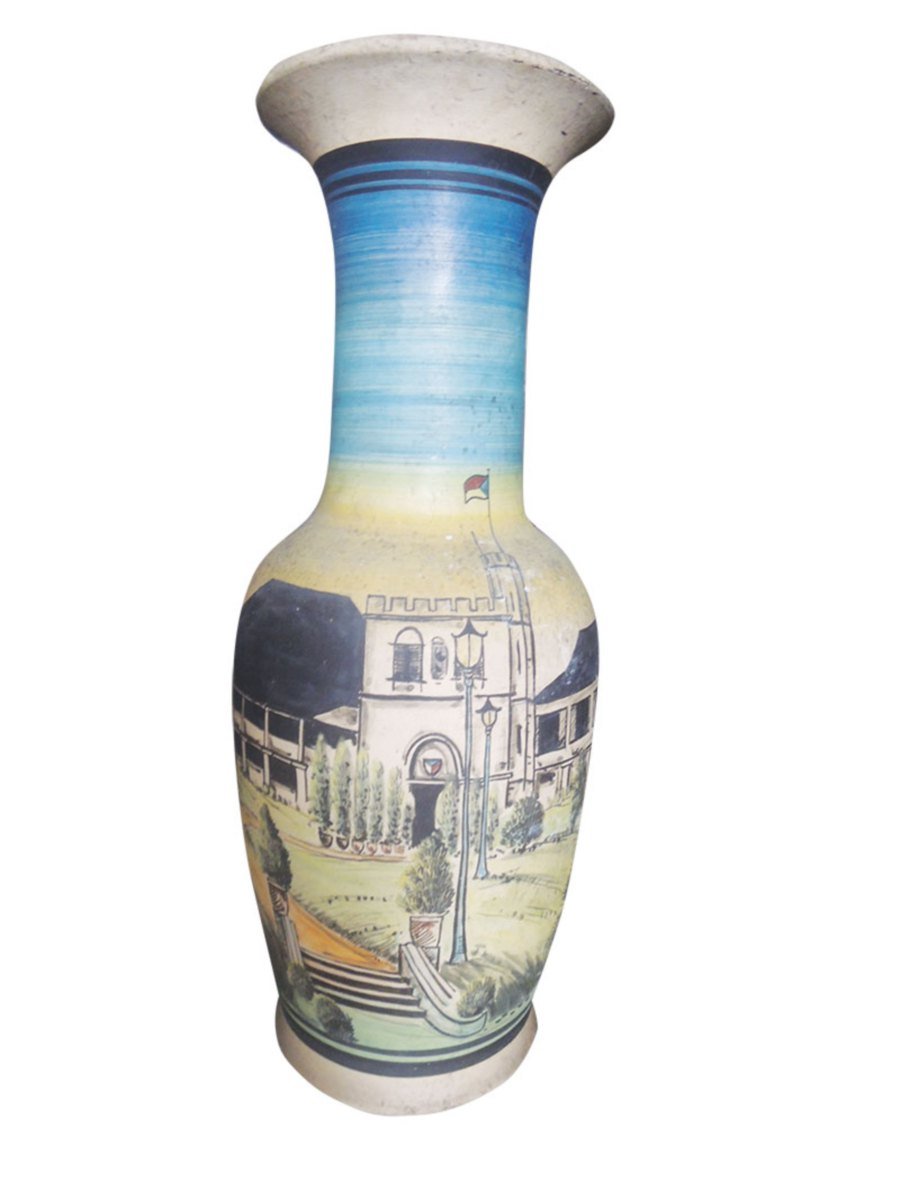
Recently I had the rare opportunity of viewing a large collection of pottery pieces ranging from drinking water cistern, candle holders, ashtrays, mugs to teapots, all made by master potters from the Land of the Hornbill. Among the potpourri of shapes, colors and sizes, a pale yellow vase struck out like a sore thumb - it was a total deviation from the other Sarawak ceramics I have seen.
.jpg_1507444513.jpg) The first residence built by James Brooke in 1842 was burnt down by the Hakka miners.
The first residence built by James Brooke in 1842 was burnt down by the Hakka miners.
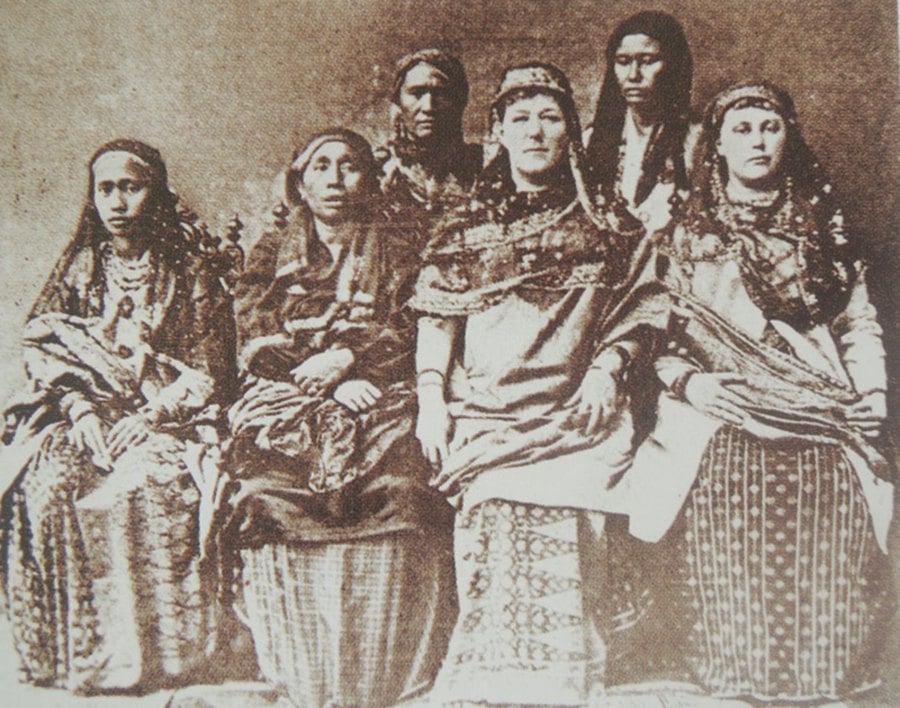 Ranee Margaret (seated, second from right) with her ladies in waiting
Ranee Margaret (seated, second from right) with her ladies in waiting
.jpg_1507444507.jpg)
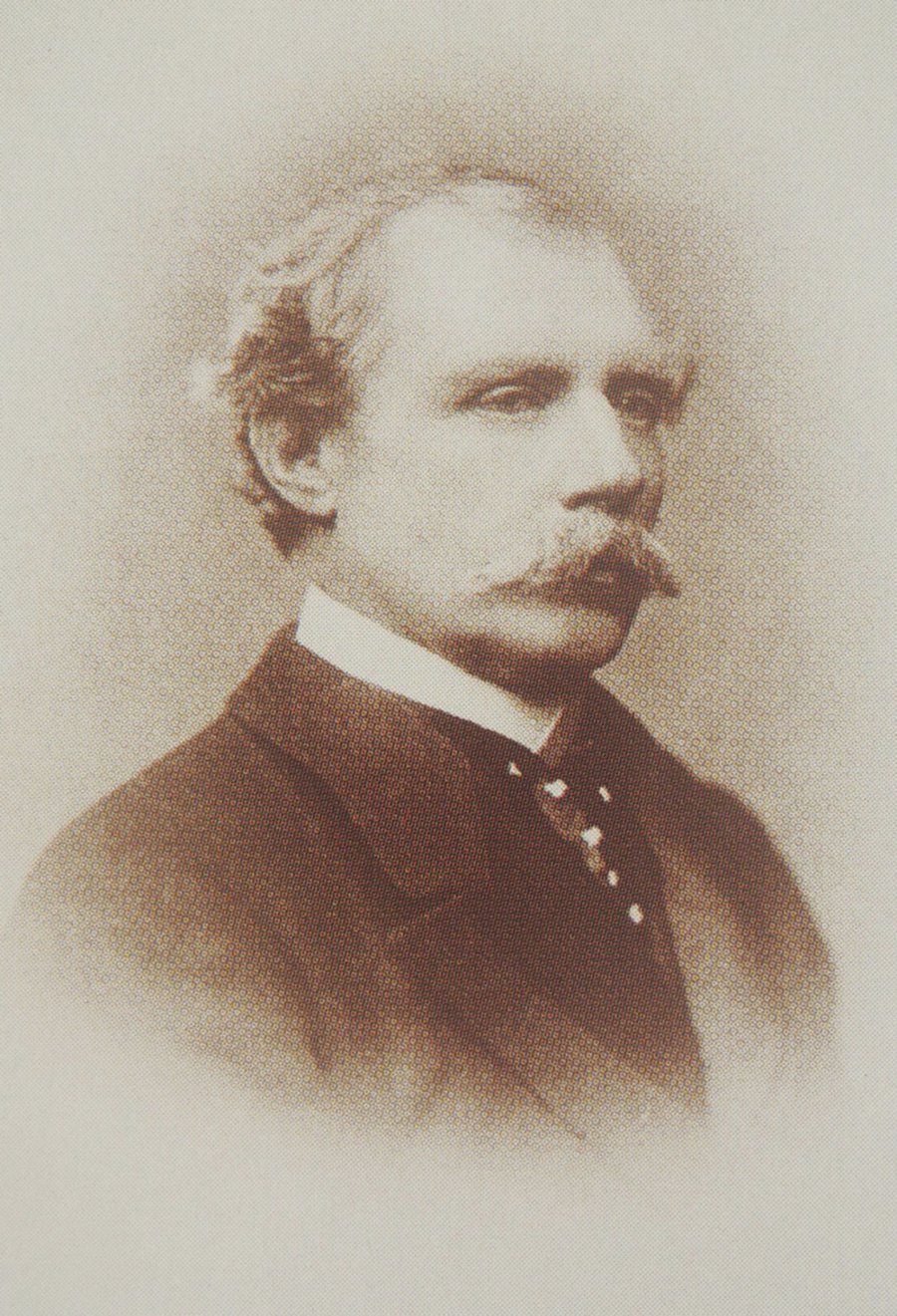
Charles Brooke ordered the building of the Astana in 1869.
 Charles Brooke enjoyed good relations with the local Dayak chieftains.
Charles Brooke enjoyed good relations with the local Dayak chieftains.
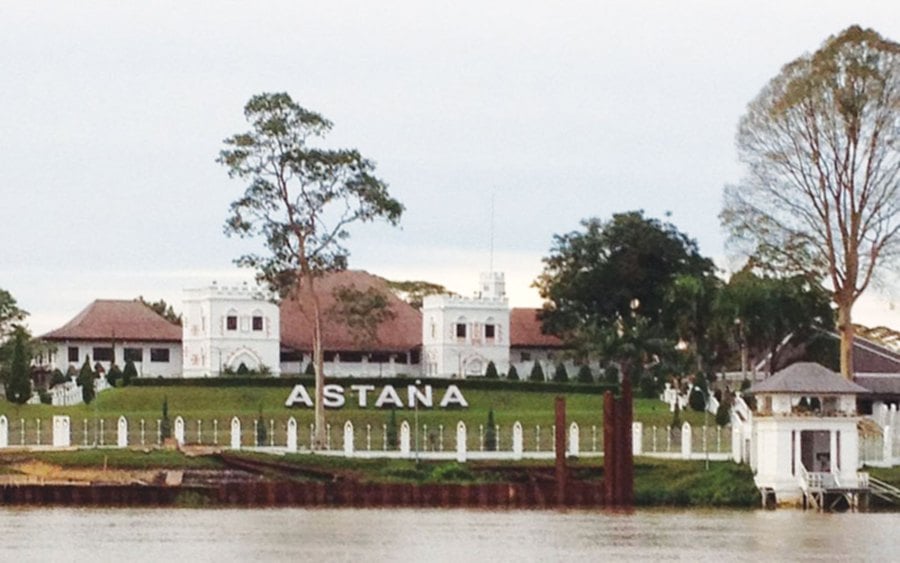
Written by: Alan Teh Leam Seng
Source: New Straits Times - Sunday Vibes - October 8, 2017
Link : www.nst.com.my/lifestyle/sunday-vibes/2017/10/288729/home-white-rajahs

.jpg_1507444507.jpg)
Rumah pertama yang dibina oleh James Brooke pada 1842 dibakar oleh pelombong Hakka.
 Ranee Margaret (duduk, dua dari kanan) bersama pembantu-pembantu
Ranee Margaret (duduk, dua dari kanan) bersama pembantu-pembantu


Charles Brooke memerintahkan pembinaan Astana pada 1869
 Astana sekarang ialah kediaman ketiga yang dibina oleh Charles Brooke di lokasi sama di Sungai Sarawak
Astana sekarang ialah kediaman ketiga yang dibina oleh Charles Brooke di lokasi sama di Sungai Sarawak
Diterjemah oleh : Teratai Melur
The discovery of a unique Sarawak vase spurs writer to learn more about the residences built by the White Rajahs in Kuching.
Sarawak pottery is world renowned. Often depicting ethnic motifs and themes, these multicolored ceramic receptacles are highly sought after by tourists as treasured keepsakes as well as make meaningful gifts for their loved ones and also keen interest from deep pocketed collectors that these exquisite pieces of art have come to spread throughout the country and also the world over.
Sarawak pottery is world renowned. Often depicting ethnic motifs and themes, these multicolored ceramic receptacles are highly sought after by tourists as treasured keepsakes as well as make meaningful gifts for their loved ones and also keen interest from deep pocketed collectors that these exquisite pieces of art have come to spread throughout the country and also the world over.

The vase depicting scene of the Astana
I promptly picked up the 0.45m tall vessel and began studying it in detail. The first thing that struck me was the absence of the customary traditional flora and fauna designs that are so prevalent in contemporary Sarawak earthenware. Instead, this one depicted a landscaped scene featuring a couple of important looking colonial era buildings. This novel subject depiction was like a breath of fresh air.
Somehow, the buildings looked rather familiar but I just couldn't remember at that point of time. Feeling rather exasperated, left after seeking permission to take photographs of the receptacle. I was hoping to solve the mystery after I get home.
It was only a few days later when I finally realised that the buildings on the vase were actually part of a single large sprawling complex called the Astana. Currently the official residence of the Yang di-Pertua or Governor of Sarawak, this magnificent palace with its iconic white tower, was once the home of two of Sarawak's White Rajahs.
THE GREAT HOUSES
Located on the north bank of the Sarawak River and directly opposite the Kuching Waterfront, the Astana was the third and last residence to be occupied the same site on the hill where the early Sultans of Brunei once lived before the arrival of James Brooke in 1838.
The first residence, built by James Brooke in 1842, was burnt to the ground during the Insurrection of February 1857. James Brooke's second home, built almost immediately to replace the first, was demolished after only 12 in 1869 to make way for the Astana.
Unlike the magnificent and lavishly-built Astana, the first residence occupied by the White Rajah was merely referred to as "Mr. Brooke's Residence". Built during those tumultuous early years, this was a very modest structure. Made entire of wood on raised posts and measuring approximately 5 square metre, it had four bedrooms, one in each corner and a large siting room in the centre with a room reserved specially for Brooke's use at the back.
.jpg_1507444513.jpg)
It was said that Brooke built his first house in the image of the bungalows he'd lived in during his early years with the British East India Company. Although the large sitting room was the most used section of the house (this was where Brooke held regular meetings with the local chiefs to keep in touch with the most recent developments), it was the vast collection of books in the special room that he treasured the most. It broke his heart when the library and its precious contents were razed to the ground on Feb 18, 1857.
On that fateful day, Lie Shan Bang led 600 of his fellow Chinese Hakka miners from Bau down the Sarawak River and marched towards Kuching. Upon arrival at the town, the mob began attacking government installations, murdering five Europeans and setting alight many buildings in the process. The town was in total chaos and the surviving Europeans hurriedly sought shelter in the town's Anglican Church.
Brooke saved his own life by swimming to safety across a nearby stream. His getaway was unknown to the rebels. The renegade Chinese miners then mistook a 17-year-old European lad to be the Rajah, decapitated him and paraded his head around Kuching on the end of a long pole. Fortunately, the timely arrival of a Borneo Company steamer and a large Dayak force from Lingga quickly put down the rebellion.
That particular incident made Brooke realize the need for stronger fortifications to ensure his safety. He immediately set about building a more secure residence and for the first time gave his home an official mane - "Government House". Although the residence was still built of wood, this time the Rajah added a small fort-like structure called "The Tower' next to his home. The two storey brick and mortar citadel served as a place of refuge during emergency.
Unfortunately, not much has been recorded about this second residence as it was considered as unlucky building after Captain Brooke Johnson, the Rajah Muda at that time, suffered a series of great misfortunes within a space of just three and a half years. He lost his first wife Annie, his son Francis and second wife Julia. All of them died in relatively quick succession and under strange inexplicable circumstances in the Government House. The deceased were laid to rest in the Brooke burial ground on the riverside close by.
CONSTRUCTION OF THE ASTANA
Plans to build the Astana began to surface soon after Brooke's death in 1868. A year after he was installed as the Second Rajah of Sarawak., Charles Brooke decided to go on leave and planned to return home to England with the intention of marrying. Wary of the stigma attached to the Government House, he promptly gave orders for it to be dismantled. A year later, in 1870, a spanking new brick and mortar structure was ready to receive Rajah and his new bride, Ranee Margaret Alice Lili de Windt.
Everyone in Kuching marvelled at the new building and agreed that it was indeed a fitting residence for a Rajah and worthy of the name Astana, which meant palace in the local language.

I scrutinise the image on the vase, conscious of the fact that the original Astana, built nearly 150 years ago, would have been much smaller that it is today.
.jpg_1507444507.jpg)
View of the Astana from the Sarawak River
Quite a number of annex buildings have been added over the years especially on the place where there was once an areca nut plantation. Charles Brooke maintained the trees for the benefit of his Dayak chieftains who'd call upon him each time they needed a large supply of betel nuts for their feasts.
I initially thought that the painting on the vase was that of two separate buildings after mistaking the Astana's square tower and battlements for those of Fort Margaritha. That section in fact serves as the Astana's main entrance.
Soon after its completion, the Astana quickly became the icon of Charles Brooke's authority to rule. Although too small to be shown on the vase, Sarawak's official motto, Dum Spiro Spero ('While there is life, there is hope') taken from the Brooke's coat of arms, was placed over the main entrance in Jawi script.
Charles Brooke ruled Sarawak like an English country estate, often standing at the Astana's river-facing verandah each morning with a telescope in his hands. He'd observe his officers arriving for work at the Government Offices on the opposing side of the Sarawak River. A stickler for discipline, Charles Brooke was known to send notices to late comers within minutes of their arrival, reminding them of the official working hours.

Charles Brooke ordered the building of the Astana in 1869.
GREY TIDINGS
Things became a little relaxed by the time the third Rajah, Charles Vyner Brooke came to power. Together with Ranee Sylvia Brett, the Rajah entertained regularly and held lavish parties for his guests. Each year, all the important and well connected people in would looke forward to the traditional banquet and ball held at the Astana during New Year's Eve. It was said that about 100 guests would sit down and make merry on a long table with the Rajah and Ranee seated at opposing ends.
People living in Kuching prior to the Second World War recall seeing the tower in the Astana covered with a type of local creeper which very much resembled the English Ivy. Legend has it that the plant was there to protect the Astana's occupants and bad luck would follow if it was removed or the tower white-washed.
During the war, Sarawak was ruled by the Japanese Imperial Army. Marquis Toshinari Maeda, as the commander of the Japanese forces in northern Borneo which included Sarawak, Brunie, Labuan, and North Borneo, made the Astana his official residence. It was said that the Commander disliked the creepers growing on the tower as they reminded him of his time spent in Great Britain as a Japanese military attache from 1927 to 1930.
Subsequently, Maeda had the creepers removed, exposing the tower's white-wash underneath. It didn't take long for the whole of Kuching to be awashed with rumors of an impending calamity. Then, just three days later, on Sept 5, 1942, after witnessing the execution of five men accused of stealing petrol, Maeda boarded a plane for Labuan to officiate an airport bearing his name. Sadly, Maeda never arrived. His plane disappeared and was not found until a month later. It had crased off the coast of Tanjung Datu, Bintulu and experts at the crash site were unable to determine the cause of the fatal accident.
After the war, Charles Vyner Brooke, faced with a series of family disputes concerning succession, decided to cede sovereignty of Sarawak to the British Crown. The Cession Bill was passed by the Council Negri on May 17, 1946 with a narrow majority of just three votes. Thereafter, the Astana has been occupied by British Colonial Governors and following the formation of Malaysia on Sept 16, 1962 until today, by Sarawak-born Governors. The Astana still stands proud by the banks of the Sarawak River today, serving as a reminder of the days when all of the states was ruled by the Brookes.


The current Astana is the third Brooke residence built on the same location by the Sarawak River.
Source: New Straits Times - Sunday Vibes - October 8, 2017
Link : www.nst.com.my/lifestyle/sunday-vibes/2017/10/288729/home-white-rajahs
RUMAH RAJAH PUTIH
Penemuan sebuah pasu unik Sarawak mendorong penulis mempelajari lebih banyak mengenai rumah yang dibina oleh Rajah-Rajah Putih di Kuching.
Tembikar Sarawak terkenal di dunia kerana sering memaparkan motif etnik dan tema etnik, ceramik warna-warni ini sering dicari-cari oleh pelancung sebagai barangan berharga dan turut diberikan sebagai hadiah kepada orang tersayang dan kepada sahabat handai. Amalan ini membuatkan para pengumpul barangan seni cantik ini telah tersebar ke seluruh negara dan ke seluruh dunia.

Baru-baru ini saya berkesempatan untuk menyaksikan koleksi hebat barangan tembikar. Ia merangkumi pelbagai bentuk barangan tembikar daripada tangki air mimuman, pemegang lilin, tempat abu rokok, koleh kepada teko teh yang dibuat oleh tukang tembikar mahir dari Bumi Kenyalang. Terdapat pelbagai bentuk potpori, pelbagai warna dan saiz dan kelihatan sebuah pasu berwarna kuning lusuh menonjol - ia amat berbeza daripada barangan ceramik Sarawak yang pernah saya lihat.
Saya mencapai pasu yang ketinggian 0.45m dan mula melihatnya dengan teliti. Perkara pertama yang menarik perhatian saya adalah ketiadaan reka bentuk flora dan fauna tradisi yang biasa dilihat pada barangan tembikar kontemporai Sarawak. Ia menggambarkan lanskap yang menunjukkan dua buah bangunan seperti bangunan penting era kolonial dan umpama udara segar.
Entah kenapa, bangunan-bangunan itu kelihatan seperti biasa dilihat tetapi saya tidak dapat mengimbas kembali pada ketika itu. Saya merasa agak jengkel dan meninggalkan tempat tersebut setelah memperoleh kebenaran mengambil gambar pasu tersebut. Saya harap dapat menyelesaikan misteri ini setelah pulang semula ke rumah.
Selang beberapa hari, barulah saya sedar akan gambar lukisan bangunan pada pasu itu sebenarnya sebahagian daripada selerak kompleks yang bernama Astana. Kini, ia merupakan kediaman rasmi Yang di-Pertua atau gabenor Sarawak. Istana hebat ini bersama menara ikonik putih pernah menjadi kediaman dua Rajah Putih Sarawak.
RUMAH-RUMAH AGAM
Terletak di bahagian utara tebing Sungai Sarawak dan betul-betul bertentangan Kuching Waterfront. Astana ini merupakan yang ketiga dan terakhir yang didiami oleh pemerintah Dinasti Brooke. Ketiga-tiga rumah agam ini terletak di tapak sama atas bukit yang pernah didiami oleh Sultan-Sultan Brunei terdahulu sebelum ketibaan James Brooke pada 1838.
.jpg_1507444507.jpg)
Astana dari Sungai Sarawak
Rumah agam pertama dibina oleh James Brooke pada 1842 telah dibakar sehingga hangus ketika Pemberontakan Febuari 1857. Rumah agam kedua James Brooke dibina dengan pantas bagi menggantikan rumah agam pertama telah dirobohkan setelah 12 tahun dibina iaitu pada 1869 bagi membina Astana.
Rumah pertama yang dibina oleh James Brooke pada 1842 dibakar oleh pelombong Hakka.
Berlawanan dengan Astana yang indah dan mengagumkan serta mewah ini, tempat tinggal pertama Raja Putih pertama asalnya dirujuk sebagai "Rumah En. Brooke". Dibina pada awal tahun ketika keadaan huru-hara, strukturnya amat sederhana. Keseluruhan struktur dibina menggunakan kayu dan diatas tiang yang ditegakkan. Ia berukuran tepat 5 meter persegi dan mempunyai empat buah bilik tidur yang terletak di setiap penjuru dan sebuah ruang tamu di bahagian tengah-tengah dengan sebuah bilik khas untuk kegunaan Brooke sahaja di bahagian belakang.
Dikatakan bahawa Brooke membina rumah pertama beliau dengan bayangan banglo-banglo yang pernah beliau tinggal pada awal penglibatannya dengan Syarikat India Timur British. Walaupun ruang tamu besar itu sering kali digunakan (tempat Brooke sering mengadakan mesyuarat dengan ketua-ketua kampung bagi mengetahui perkembangan terbaharu), beliau amat meminati koleksi besar buku-buku yang disimpan dalam bilik khas. Belaiu merasa amat kecewa apabila perpustakaan serta barangan dalamnya bakar hangus pada Febuari 18, 1857.
Pada hari tersebut, Liu Shan Bang mengetuai 600 pelombong Cina Hakka dari Bau, yang terletak brhampiran Sungai Sarawak menuju ke Kuching. Setelah tiba di sana, kumpulan perusuh mula menyerang pusat kerajaan, membunuh lima orang Eropah dan membakar banyak bangunan. Bandar Kuching menjadi huru-hara dan orang Eropah yang terselamat mencari perlindungan di Gereja England berhampiran.
Kejadian ini membuatkan Brooke sedar akan keperluan kubu yang lebih kuat bagi menjamin keselamatannya. Maka dengan serta-merta beliau membuat keputusan untuk membina rumah yang lebih selamat dan buat pertama kali, beliau menamakan rumah rasminya - "Rumah Kerajaan". Walaupun, rumah baharunya juga dibina dengan kayu, beliau menambah struktur seperti sebuah kubu kecil dipanggi "The Tower" bersebelahan rumahnya. Kubu kota dua tingkat diperbuat daripada bata dan mortar dijadikan sebagai tempat perlindungan ketika darurat.
Malangnya, tiada banyak maklumat mengenai rumah kedua ini. Ia dianggap sebagai bangunan tidak bernasib baik setelah Kapten Brooke Johnson, Rajah Muda ketika itu, mengalami beberapa kejadian malang dalam tempoh tiga setengah tahun. Beliau kehilangan isteri pertamanya, Annie, anak lelakinya, Francis dan isteri keduanya, Julia. Kesemua mereka meningal dunia satu per satu di dalam Rumah Kerajaan dan dalam situasi yang tidak dapat dijelaskan. Kesemua mereka dikebumikan di tanah perkuburan Brooke di tepi sungai berhampiran.
PEMBINAAN ASTANA
Rancangan untuk membina Astana mula muncul setelah kematian Brooke pada tahun 1868. Setahun setelah ditabalkan sebagai Rajah Kedua Sarawak, Charles Brooke mengambil keputusan untuk bercuti dan merancang untuk pulang ke England dengan niat untuk berkahwin. Beliau berhati-hati dengan stigma yang dikaitkan dengan Rumah Kerajaan, beliau memberi arahan agar ia dirobohkan. Setahun kemudian, pada tahun 1870, sebuah struktur baharu diperbuat daripada bata dan mortar telah siap dibina dan bersedia untuk menerima Rajah dan isteri barunya, Ranee Margaret Alice Lili de Windt.

Semua orang di Kuching berasa kagum dengan bangunan baharu ini dan bersetuju ia sesuai sebagai rumah untuk Rajah dan harus dinamakan sebagai Astana, bermaksud istana dalam bahasa tempatan. Saya meneliti imej pada pasu serta menyedari bahawa Astana tersebut dibina hampir 150 tahun lalu bersaiz kecil dengan Astana baharu.
Beberapa ruang tambahan mula dibina pada Astana ini pada tahun-tahun berikutnya pada kawasan yang terdapat ladang pokok buah pinang. Charles Brooke mengekalkan pokok-pokok ini untuk ketua suku kaum Dayak yang akan meminta daripadanya kuantiti buah pinang banyak setiap kali mereka mengadakan jamuan.

Charles Brooke mempunyai hubungan erat dengan ketua-ketua suku kaum Dayak
Pada mulanya, saya fikir lukisan pada pasu tersebut adalah dua buah banguana apabila tersilap menganggap menara bersegi empat Astana dan benteng Kubu Margaritha. Sebenarnya, bahagian tersebut adalah pintu utama Astana.
Setelah dibina, Astana menjadi ikon kuasa pemerintahan Charles Brooke. Walaupun ia kecil untuk dilukiskan pada pasu, motto rasmi Sarawak adalah Dum Spiro Sporo (Di mana ada kehidupan, di situ ada harapan) diambil daripada jata Brooke ditulis dalam tulisan jawi dan diletakkan pada pintu masuk utama Astana.
Charles Brooke memerintah Sarawak seperti memerintah ladang Inggeris. Setiap pagi, beliau akan berdiri di veranda Astana yang terletak berhadapan dengan sungai sambil melihat menerusi teleskop. Beliau memerhati ketibaan para pegawai bertugas di pejabat Kerajaan yang terletak di seberang Sungai Sarawak. Beliau amat cerewet mengenai displin akan menghantar notis kepada para pegawainya yang tiba lewat untuk mengingatkan mereka akan waktu bertugas.

Charles Brooke memerintahkan pembinaan Astana pada 1869
PERUBAHAN MASA
Apabila Rajah ketiga, Charles Vyner Brooke menjadi Rajah, keadaan menjadi sedikit tenang. Bersama-sama dengan Ranee Sylvia Brett, beliau sering mengadakan jamuan mewah untuk tetamunya. Saban tahun, kesemua individu-individu penting dan orang yang berkepentingan di Kuching akan ternanti-nanti akan jamuan tradisi dan majlis tari-menari di Astana pada ambang Tahun Baharu. Dikatakan 100 jemputan akan duduk dan menjamu selera di sebuah meja panjang yang menempatkan Rajah dan Ranee di setiap hujung meja.
Penduduk yang tinggal di Kuching sebelum Perang Dunia Kedua masih ingat akan menara di Astana dilitupi dengan sejenis tumbuhan menjalar tempatan yang sama seperti English Ivy. Dikisahkan tumbuhan itu bertujuan melindungi ahli keluarga di Astana dan sebarang nasib malang yang mungkin menimpa sekiranya tumbuhan itu dialihkan atau menara tersebut dibiarkan dengan warna putih.
Ketika perang, Sarawak diperrintah oleh Tentera Imperial Jepun Marquis Toshirnari Maeda ialah komandar tentera Jepun di bahagian utara Borneo iaitu Sarawak, Brunei, Labuan dan utara Borneo dan menjadikan Astana sebagai kediaman rasminya. Dikatakan beliau tidak suka akan tumbuhan menjalar pada menara kerana ia mengingatkannya kembali masa yang beliau habiskan di Great Britain ketika bertugas sebagai tentera atase Jepun dari tahun 1927 hingga 1930.
Maeda mengarahkan tumbuhan menjalar itu dibuang. Ini membuatkan warna putih menara terdedah. Tidak lama kemudian, berita mula tersebar di seluruh Kuching bahawa akan berlaku bencana. Hanya tiga hari tumbuhan menjalar itu dibuang, pada 15 Sept, 1942 setelah Maeda menyaksikan pelaksanaan hukuman mati terhadap lima orang atas tuduhan mencuri petrol beliau menaiki pesawat ke Labuan bagi merasmikan lapangan terbang sempena namanya. Malang sekali, beliau tidak tiba. Pesawat yang dinaiki beliau hilang dan hanya ditemui sebulan kemudian. Ia telah terhempas di pesisir Tanjung Datu, Bintulu. Pakar tapak kejadian tidak dapat mengenal pasti sebab pesawat terhempas!
Setelah perang berakhir, Charles Vyner Brooke menghadapi pelbagai masalah keluarga mengenai pewaris dan mengambil keputusan menyerahkan kedaulatan Sarawak kepada British. Rang Undang-Undang Penyerahan diluluskan oleh Majlis Negeri pada 17 Mei, 1946 dengan majoriti kecil iaitu kelebihan tiga undi sahaja. Setelah itu, Astana didiami oleh Gabenor-Gabenor Kolonial British sehingga pembentukan Malaysia pada 16 Sept, 1963 dan hari ini, ia didiami oleh Gabenor-Gabenor kelahiran Sarawak. Astana masih berdiri teguh di tebing Sungai Sarawak, mengingatkan kita pada era ketika semua negeri diperintah oleh kelurga Brooke.

Diterjemah oleh : Teratai Melur
Comments
Post a Comment